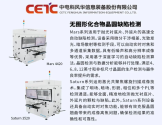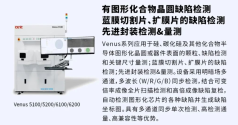Er, 28 years!?
he used typical Chinese slang here.. everyone does this on Weibo and other social media.I think he meant 2-8 at least I hope.
it means 2028 year.
Er, 28 years!?
he used typical Chinese slang here.. everyone does this on Weibo and other social media.I think he meant 2-8 at least I hope.


It will take about 1.5-2 years to enter industrial trial production, and complete mass production will take 28 years. There are now many process optimizations being done.
One of the tricky things about EUV rumors is that there’s probably more than one design in prototyping.Some say that domestically produced EUV lithography machines had already begun trial production by the end of 2024.
Confirmed via reliable sources (details undisclosed) that the EUV prototype machine has been manufactured, installed, and debugged. Production line assembly is underway (pending peripheral equipment), with EUV parameter fine-tuning ongoing—a standard 1.5-2 year process.Year 2028?
That I flatly do not believe.
It is the Chinese communist official, and if there is a date set, usually it always is delivered, what the promise or goal was, way ahead of time, that way everyone looks good and gets promoted.
Same old tricks as always.
2026 or 2027 at the absolute latest full scale EUV production of advanced chips.
Kind of means the EUV is already here.
LOL!

Pardon me for my question, but will Chinese foundries capable of producing top end nodes comparable to the latest TSMC/Samsung processes once EUV machines become fully operational in 2027/2028? I've read in this thread that 3nm nodes has already been developed but is pending EUV machines to mass produce but nothing on more advanced nodes like 2nm and TSMC A14 equivalent (According to roadmaps TSMC tends to produce these by 2027).Confirmed via reliable sources (details undisclosed) that the EUV prototype machine has been manufactured, installed, and debugged. Production line assembly is underway (pending peripheral equipment), with EUV parameter fine-tuning ongoing—a standard 1.5-2 year process.
Unlike DUVi, China lacks reference processes for EUV. Thus, all supporting EUV equipment requires development from scratch, justifying the 1.5-2 year timeline. Pilot production will follow—mirroring SMIC’s Kirin 9000s production status as of September 2022.
Domestic DUVi full production line verification (covering 7-5nm nodes) is expected by year-end. EUV mass production is projected for 2028 (2027 remains tentative, potentially limited to trial production for Huawei chips).
Current focus is ramping 5-7nm yields via domestic DUVi, with 7nm production costs just 15% higher than international benchmarks (not 30%).
China’s saturation development approach involves hundreds of teams optimizing DUVi/EUV production line parameters. Domestic DUVi—enhanced for 5nm via specialized modifications—now outperforms ASML’s DUVi. Key innovations include:
Overlay accuracy below 1nm achieved on one DUVi machine
Solid-state lasers (superior to ASML’s gas lasers frozen in 2002-2003 tech)
Potential integration of etching/ion implantation modules for ultra-high precision
Originally three separate teams, China’s DUVi effort has consolidated into a single entity (thousands strong). Beyond 5nm (quadruple patterning), they’re developing 3nm (sextuple patterning) as a cost-no-object contingency before EUV readiness.
Three EUV paths are being pursued concurrently. Harbin Institute of Technology’s LPP+electrical excitation approach currently matches ASML’s 250W EUV performance. US export controls remain effective—China must independently rediscover EUV process details without reference templates, inevitably slowing progress.
EUV lithography faces fundamental barriers at 2-3nm nodes. As alternatives, China explores four post-EUV pathways for advanced chips (only chiplet is publicly acknowledged; three others remain classified).
So how much years every source saying 10-15 years but 2028 is 4 years awayThe current state of domestic EUV development roughly matches where domestic DUVi stood in 2021—capable of etching high-precision patterns, equivalent to equipment validation/testing.
After 1.5-2 years of production line debugging, by late 2026 to early 2027, preliminary EUV production processes will be finalized with equipment fully integrated into production lines. This enables pilot production—similar to SMIC South’s Kirin 9000s production for Huawei in September 2022—characterized by initial low yields and ongoing process refinement.
By late 2028, target yields should reach commercially viable levels with optimized production lines. Domestic EUV systems will commence scaled deployment, mirroring the rollout schedule of domestic DUVi memory chip production lines in late 2025.
Timelines are realistically fixed given systemic complexity. Accelerating progress isn’t feasible through hundreds working overtime—it demands industry-wide round-the-clock efforts for multiple years to overcome the West’s 10-15-year cumulative advantage.
